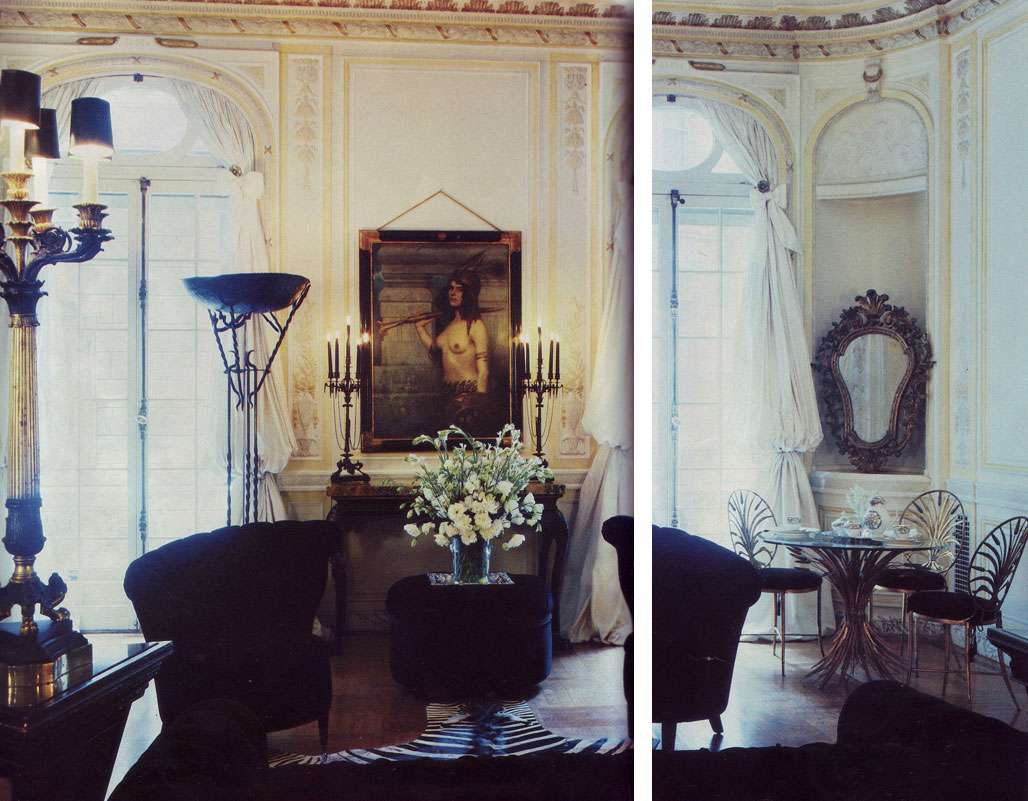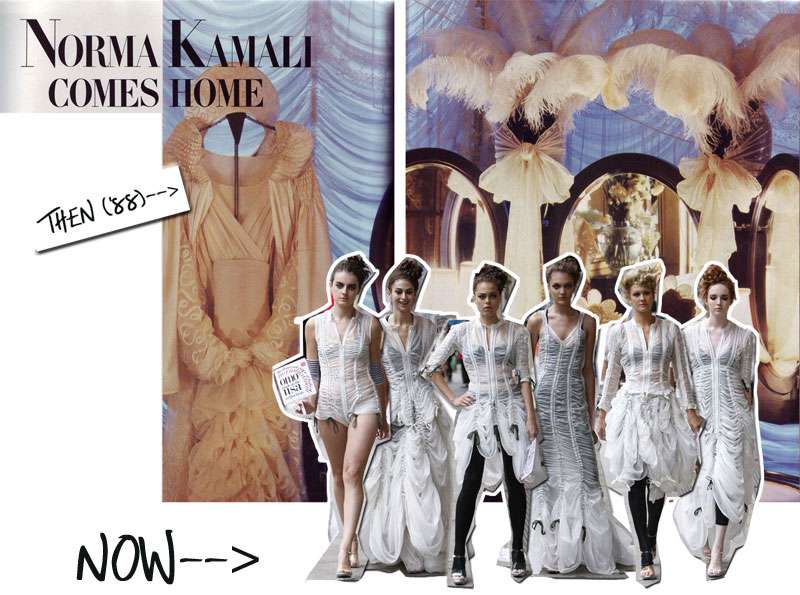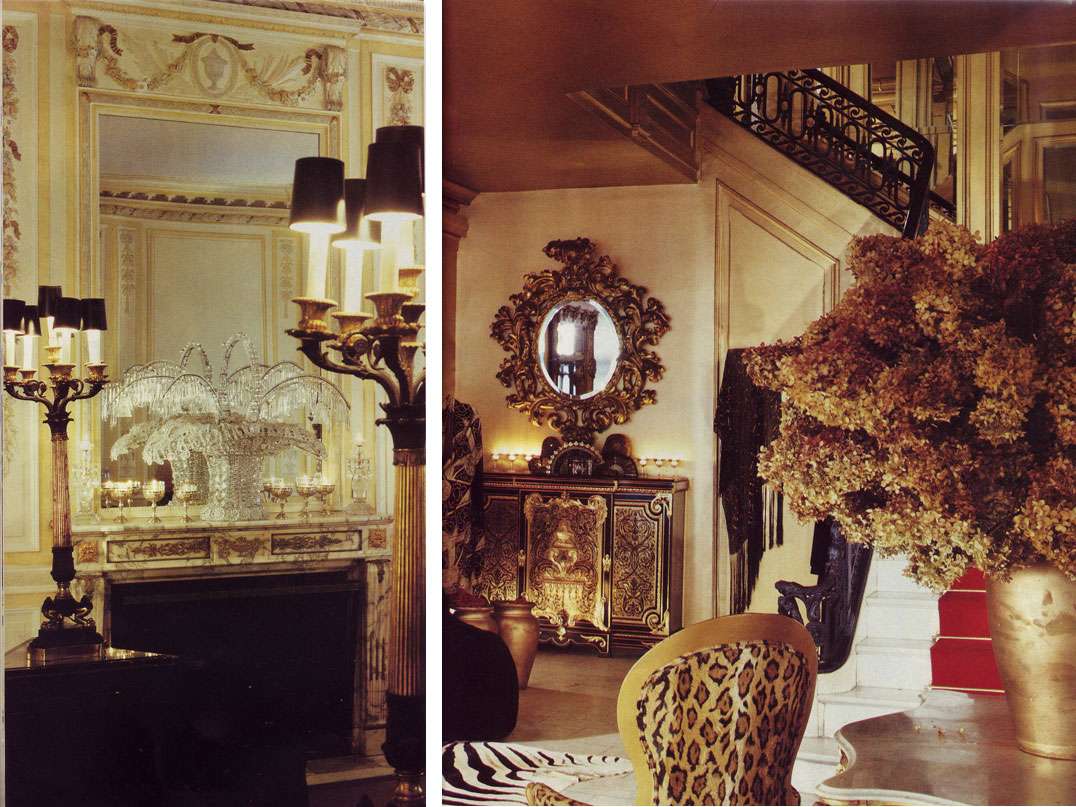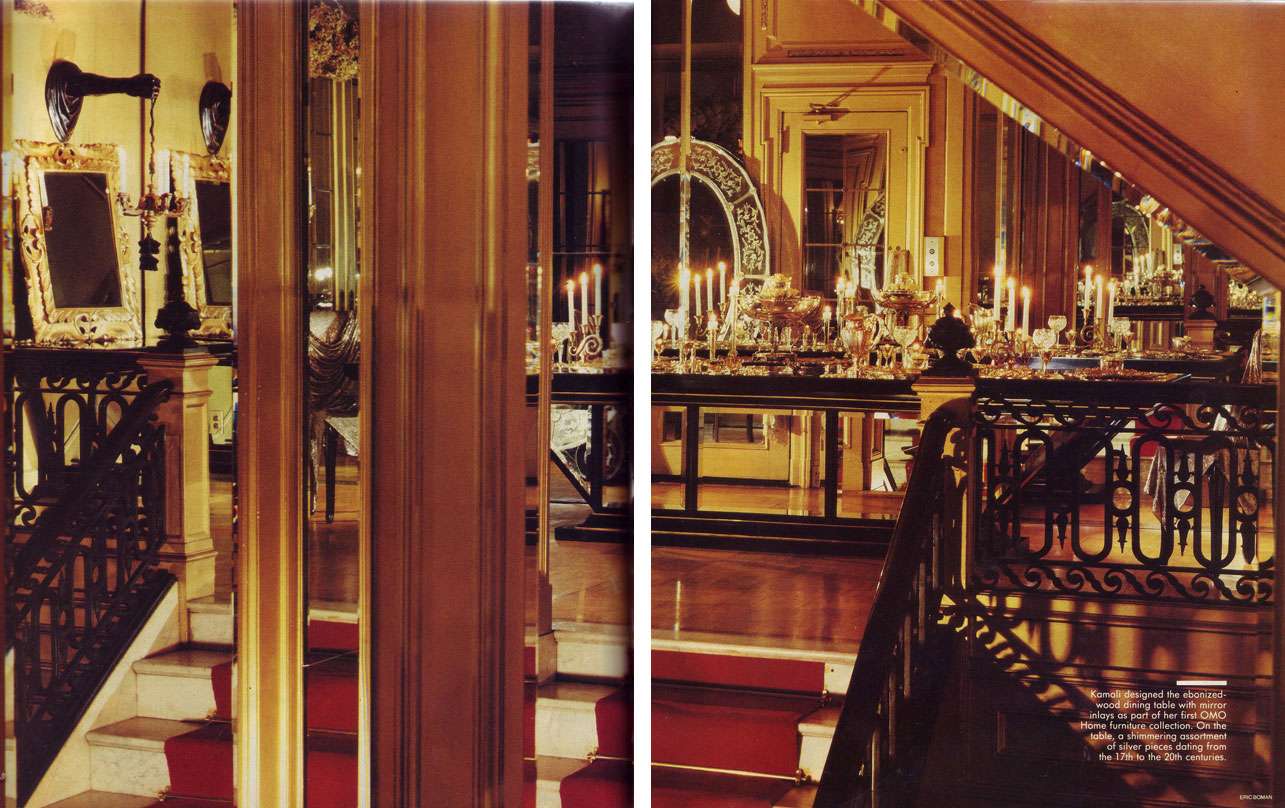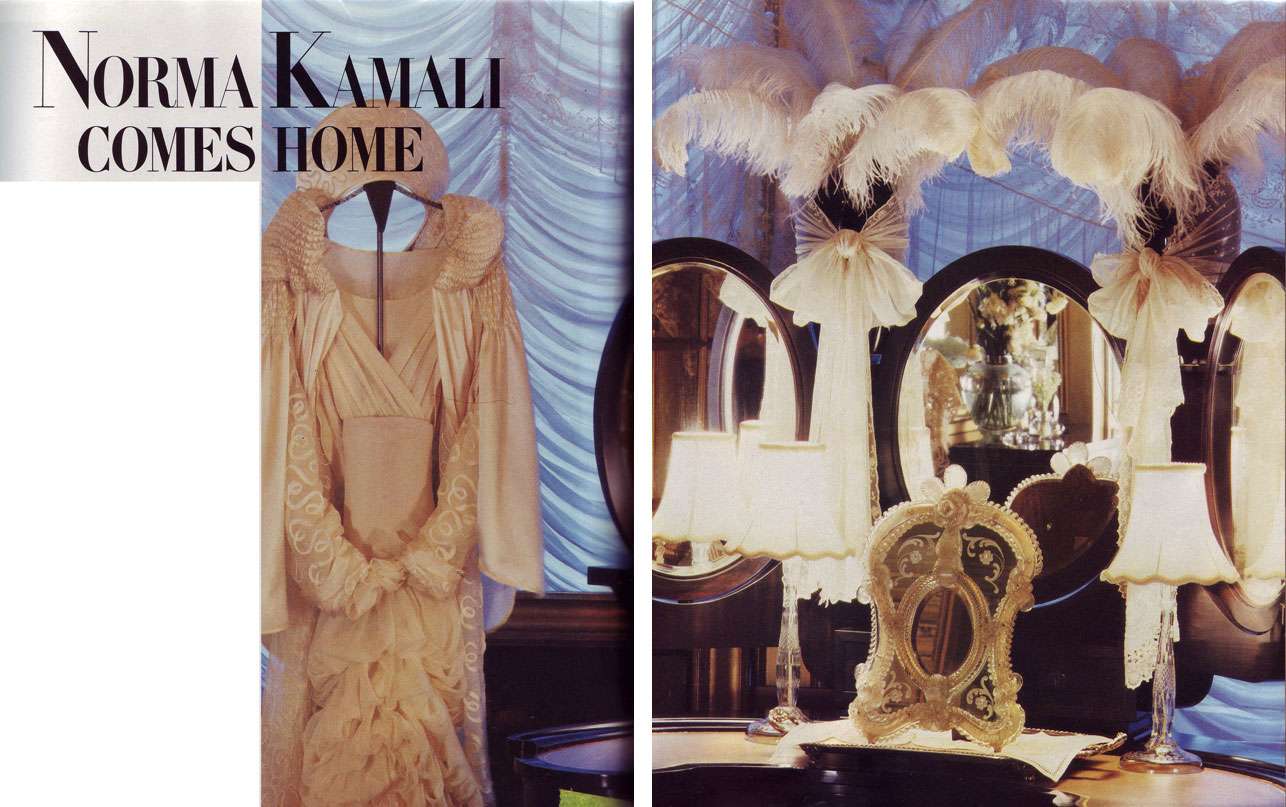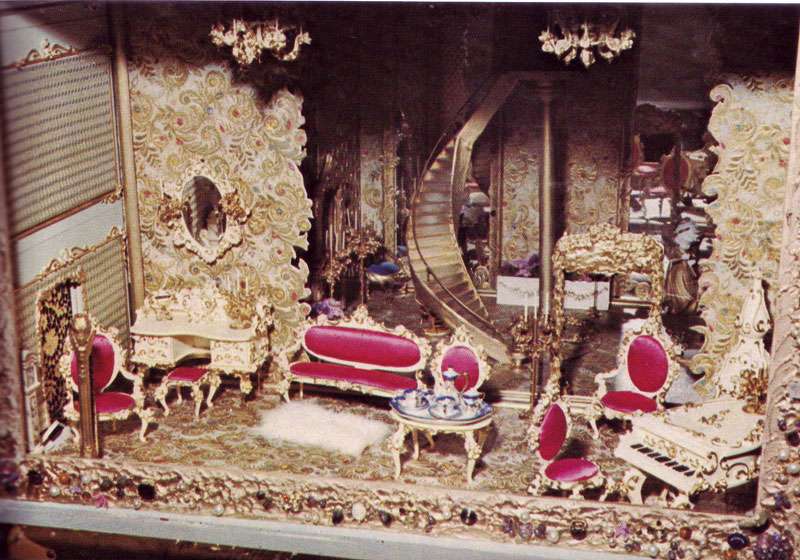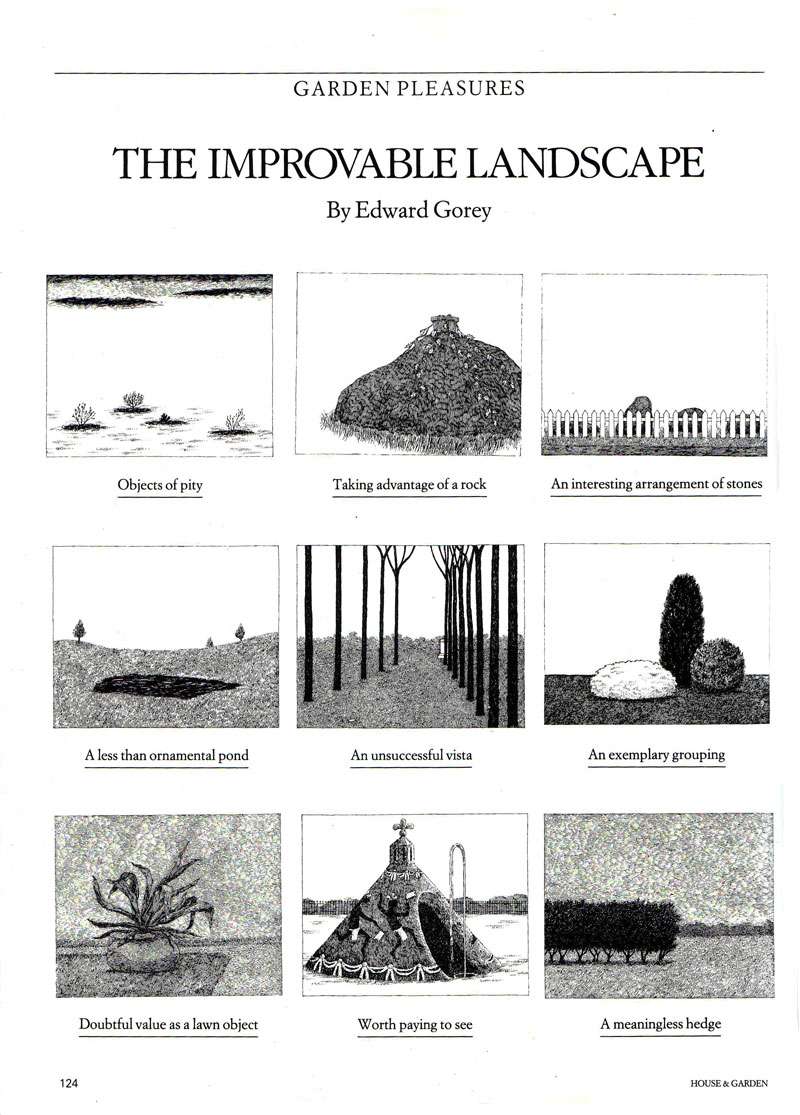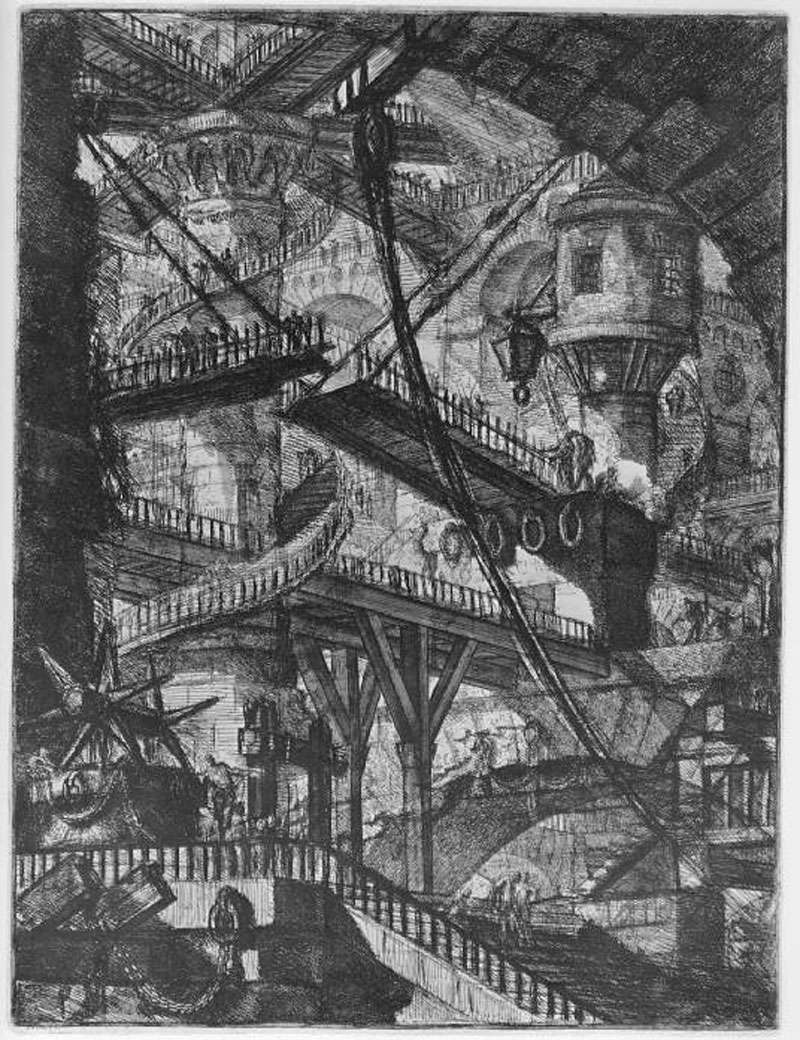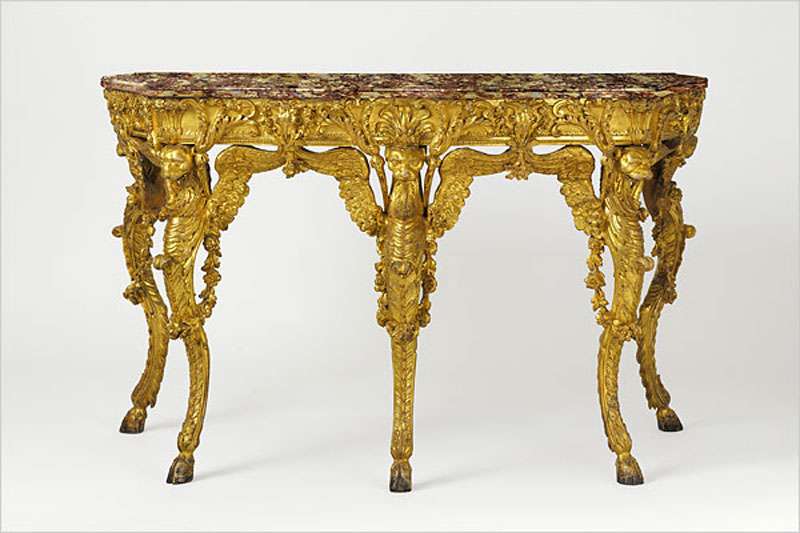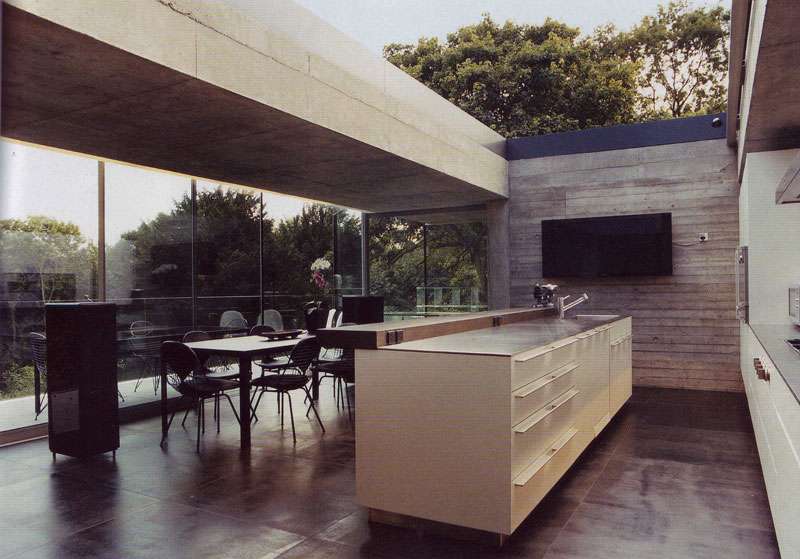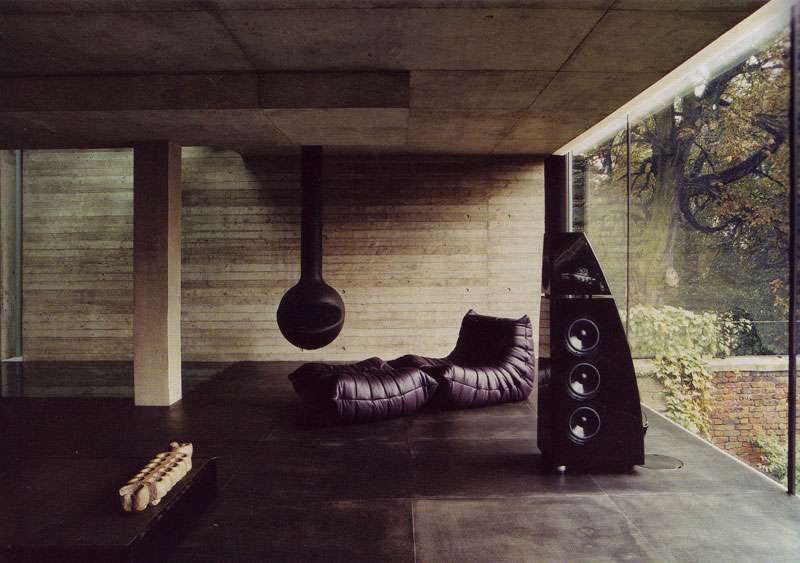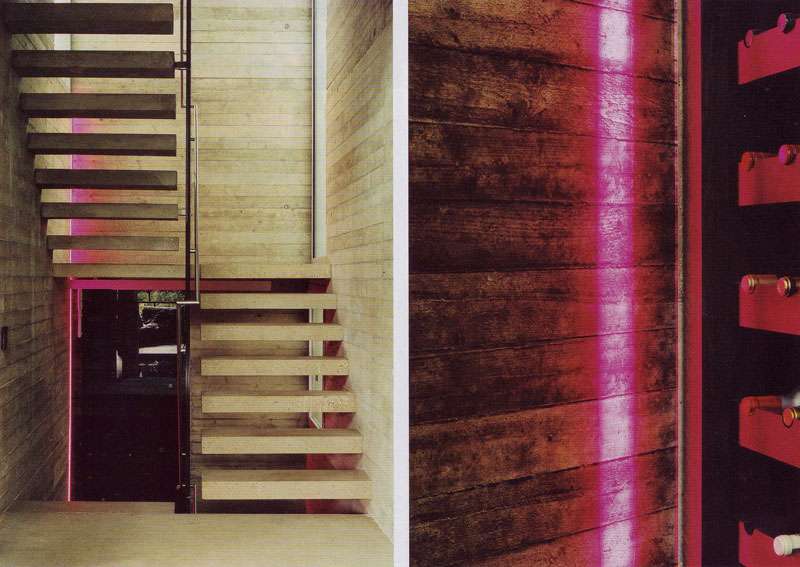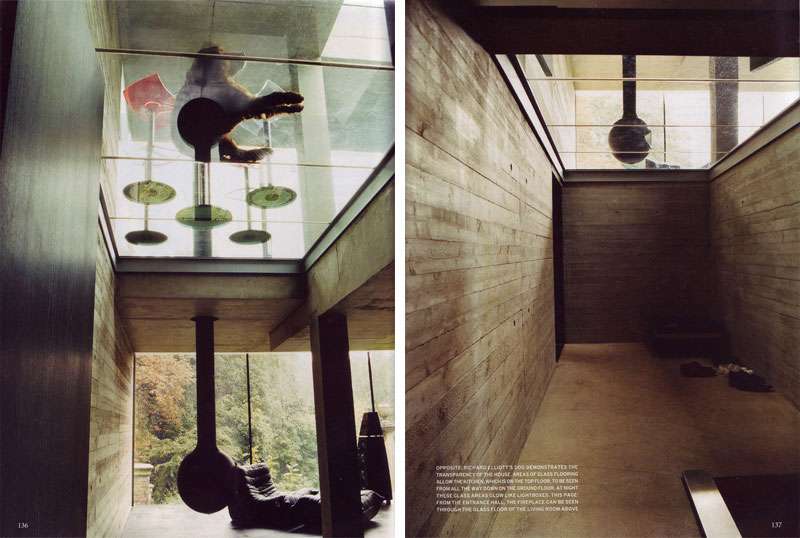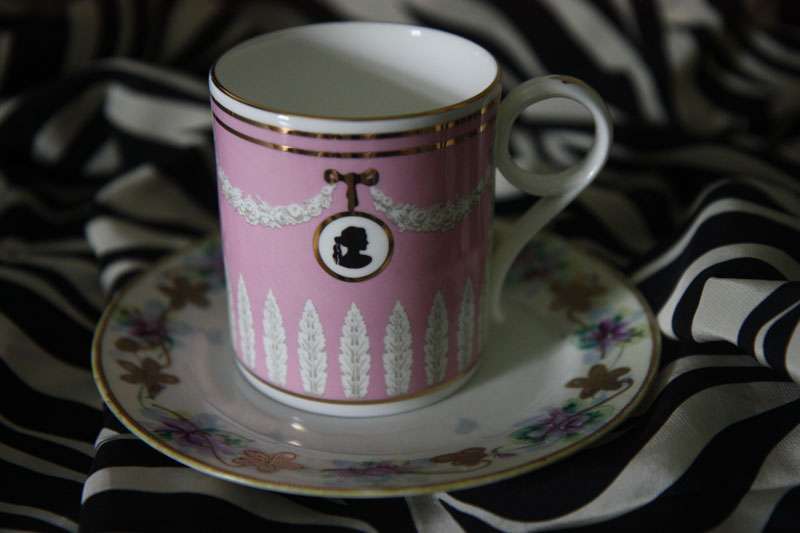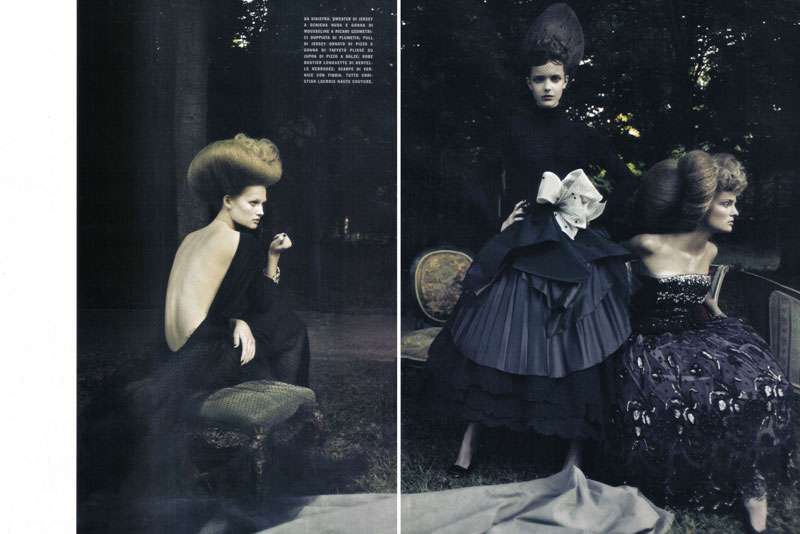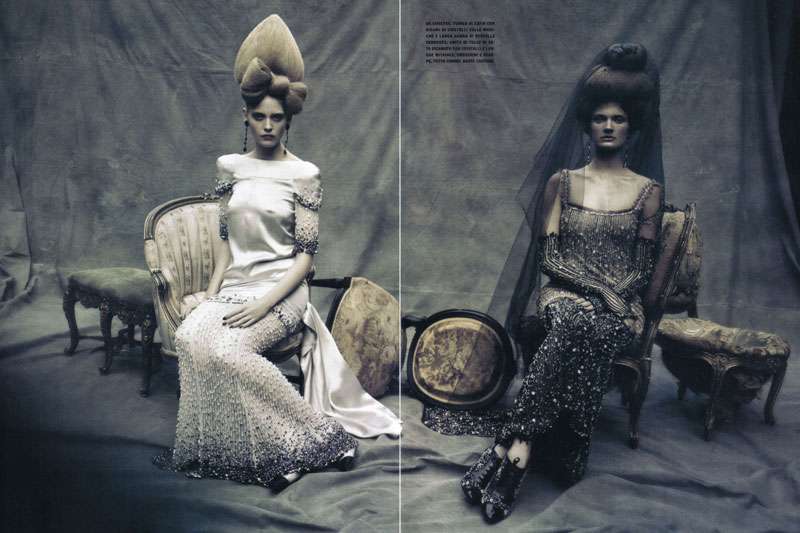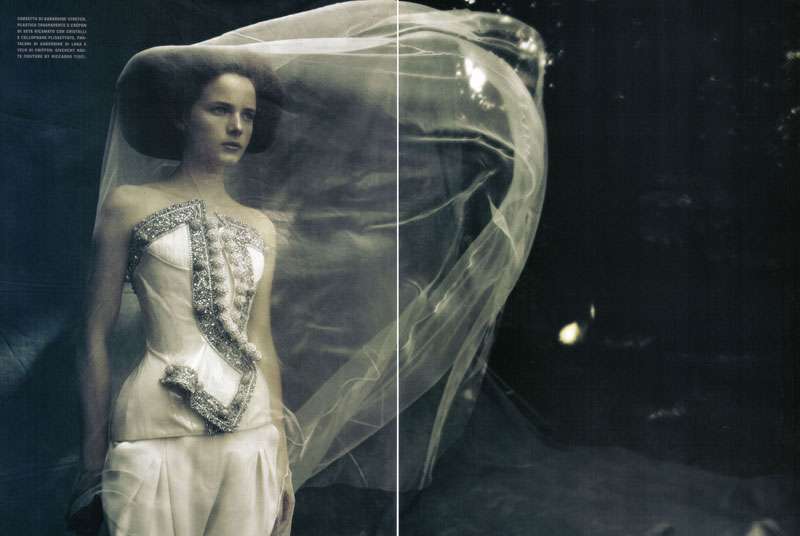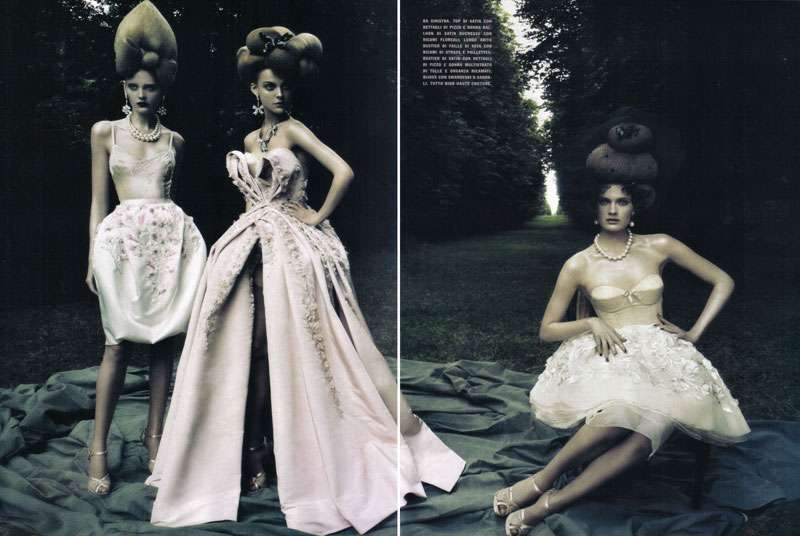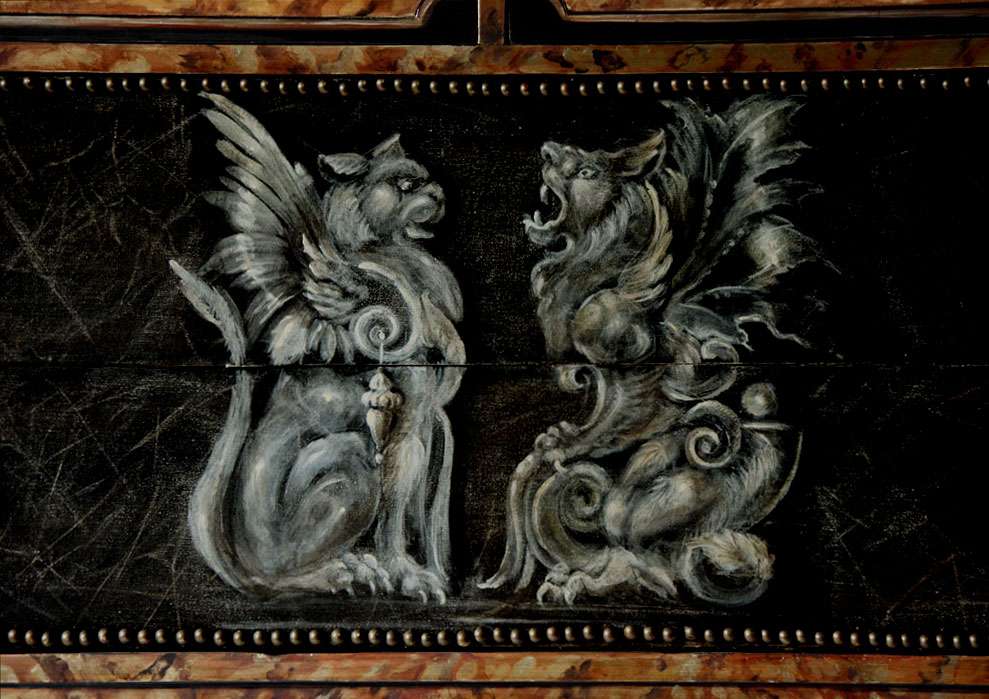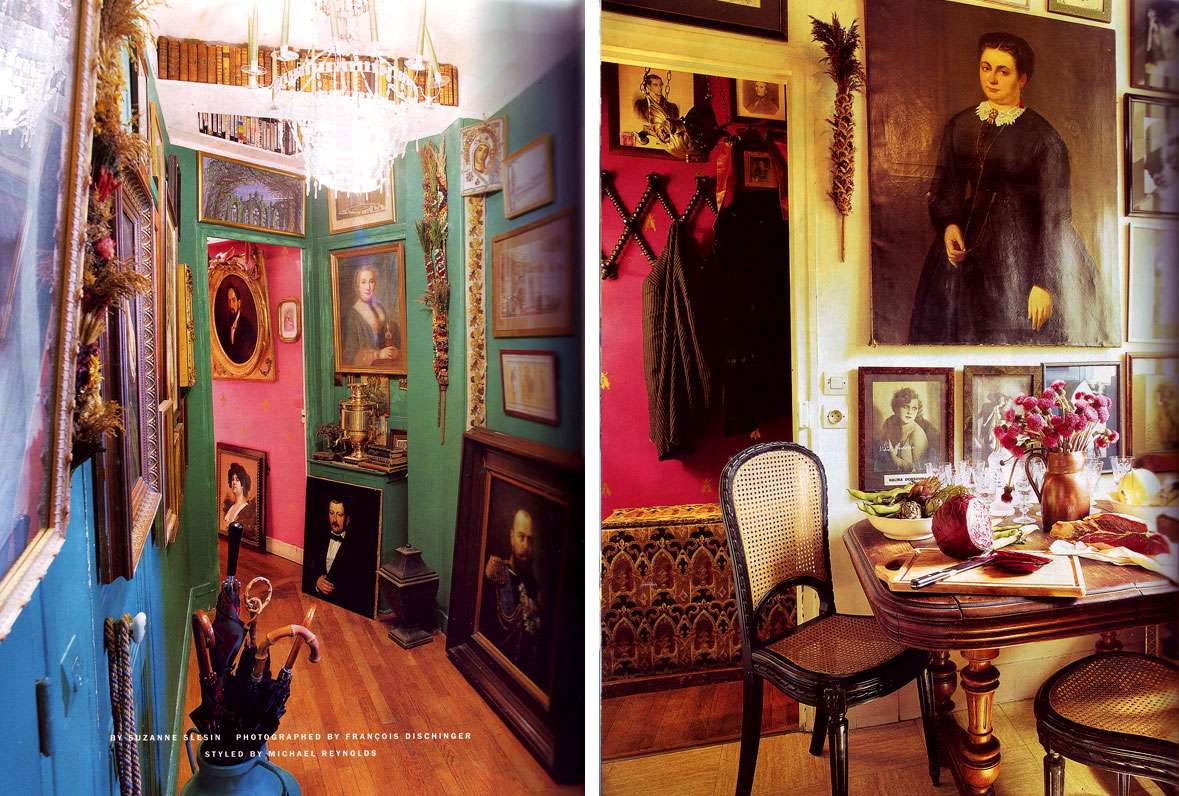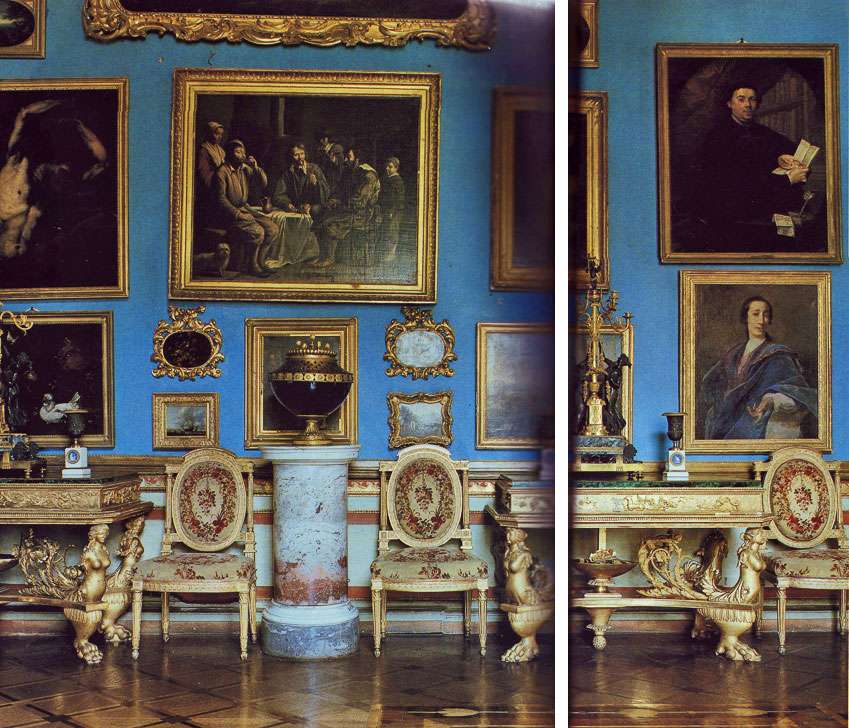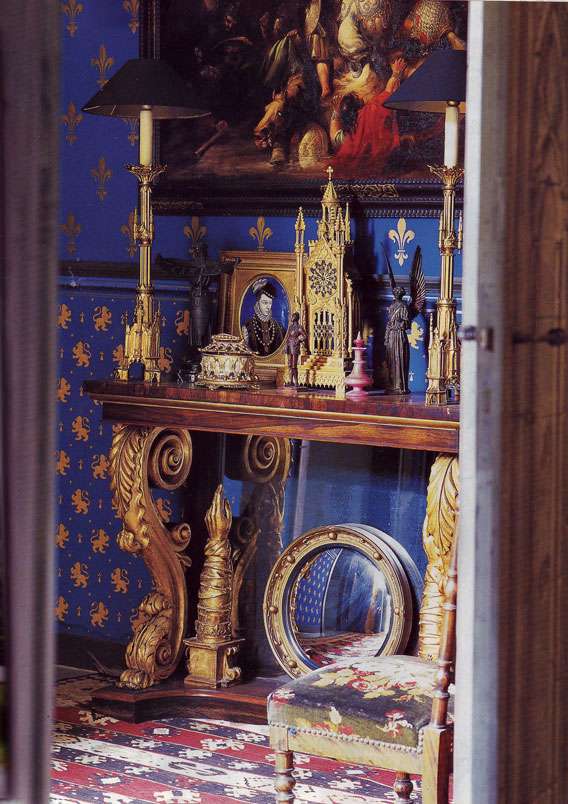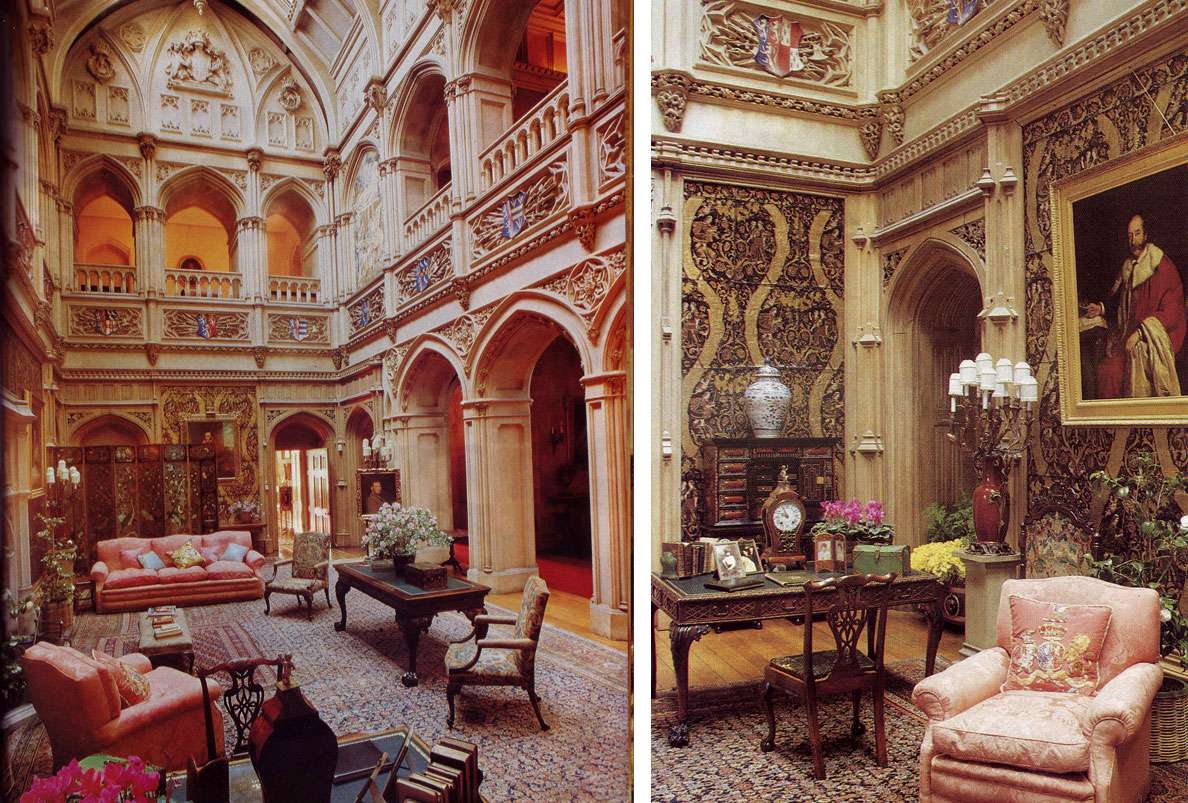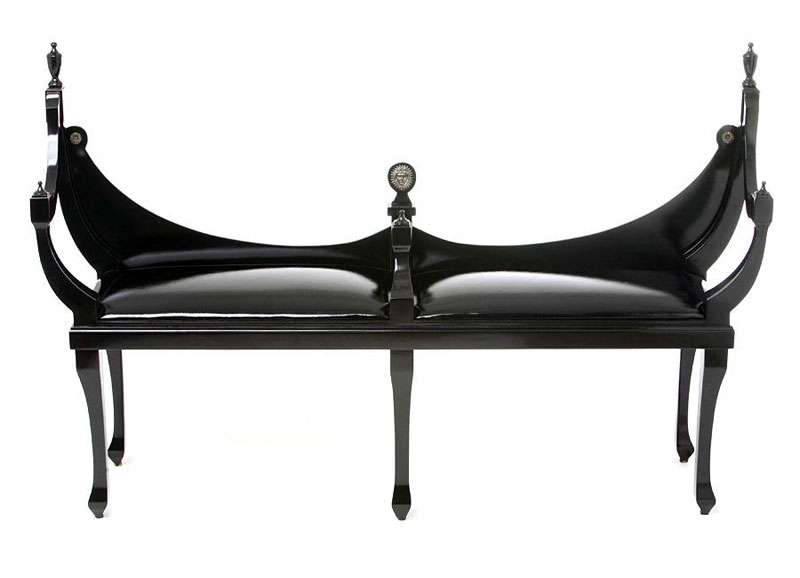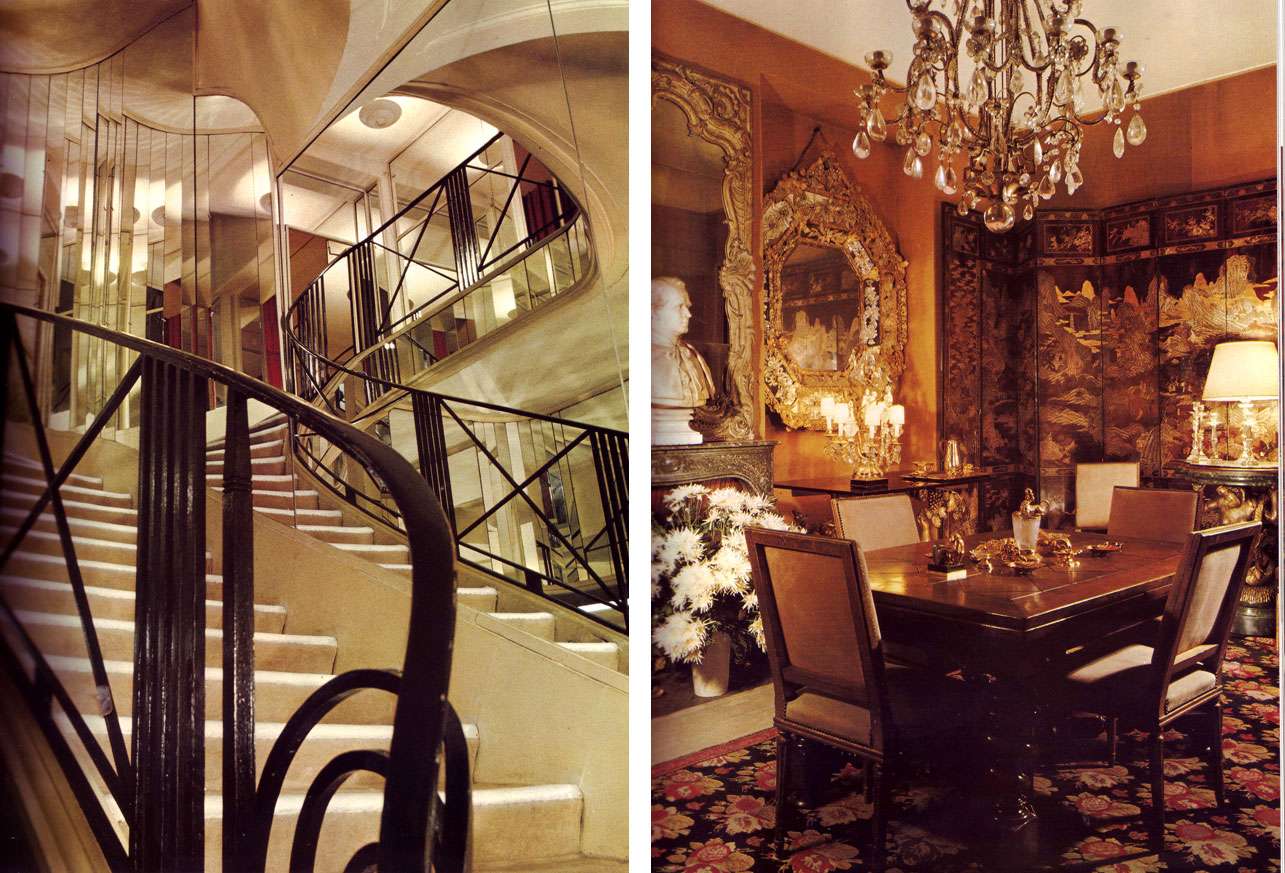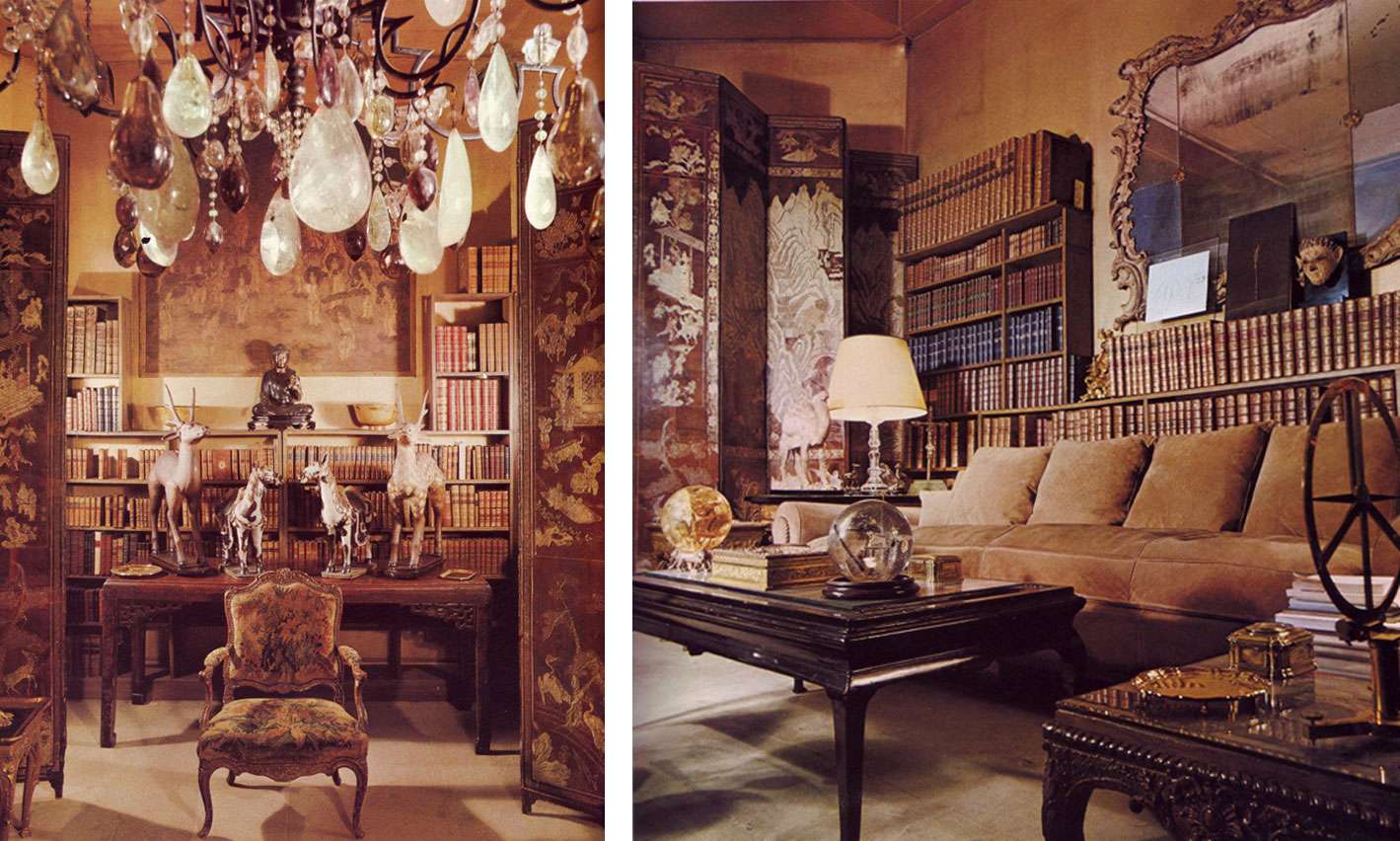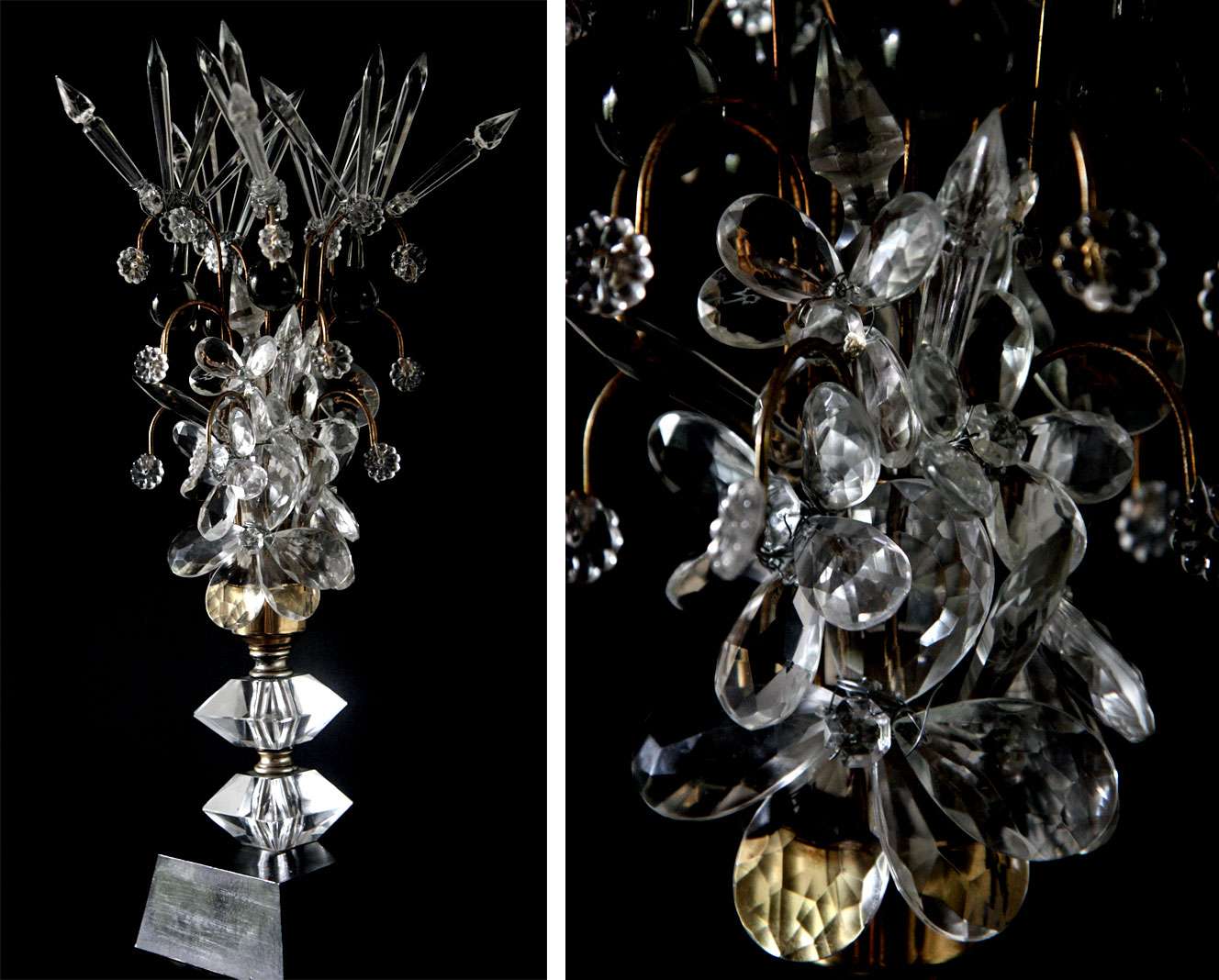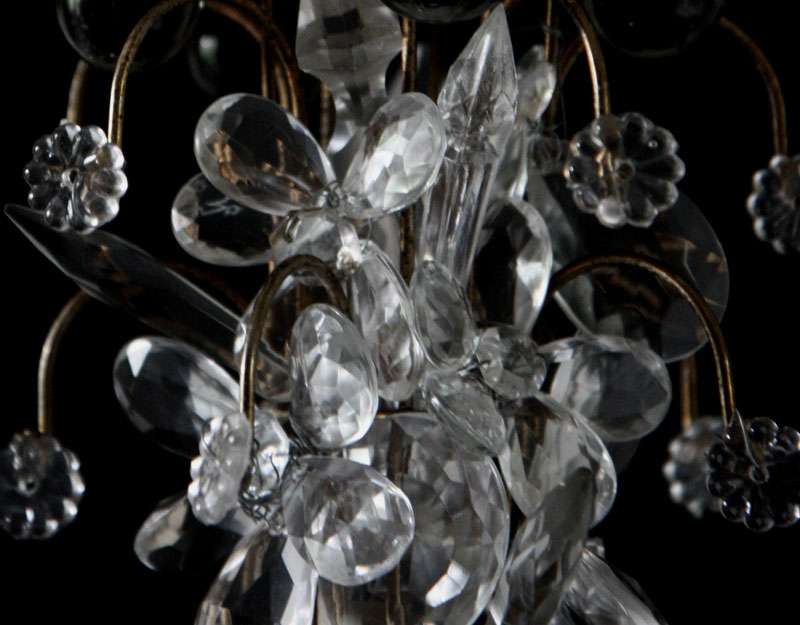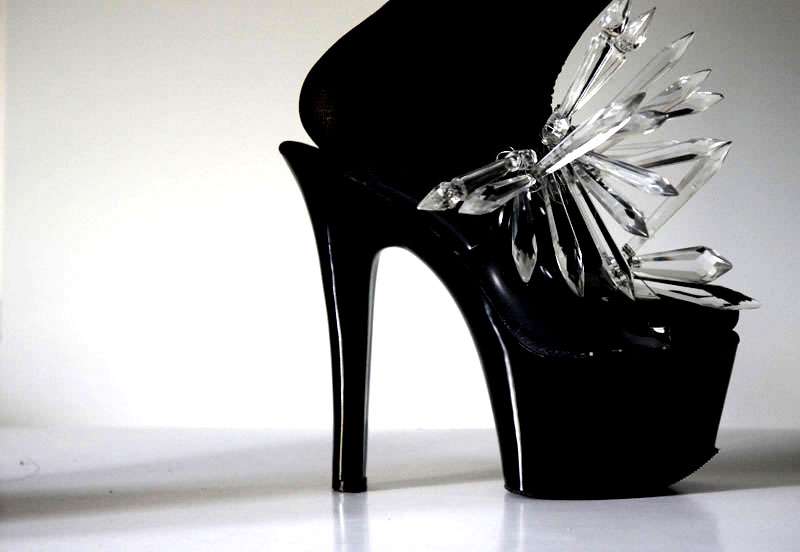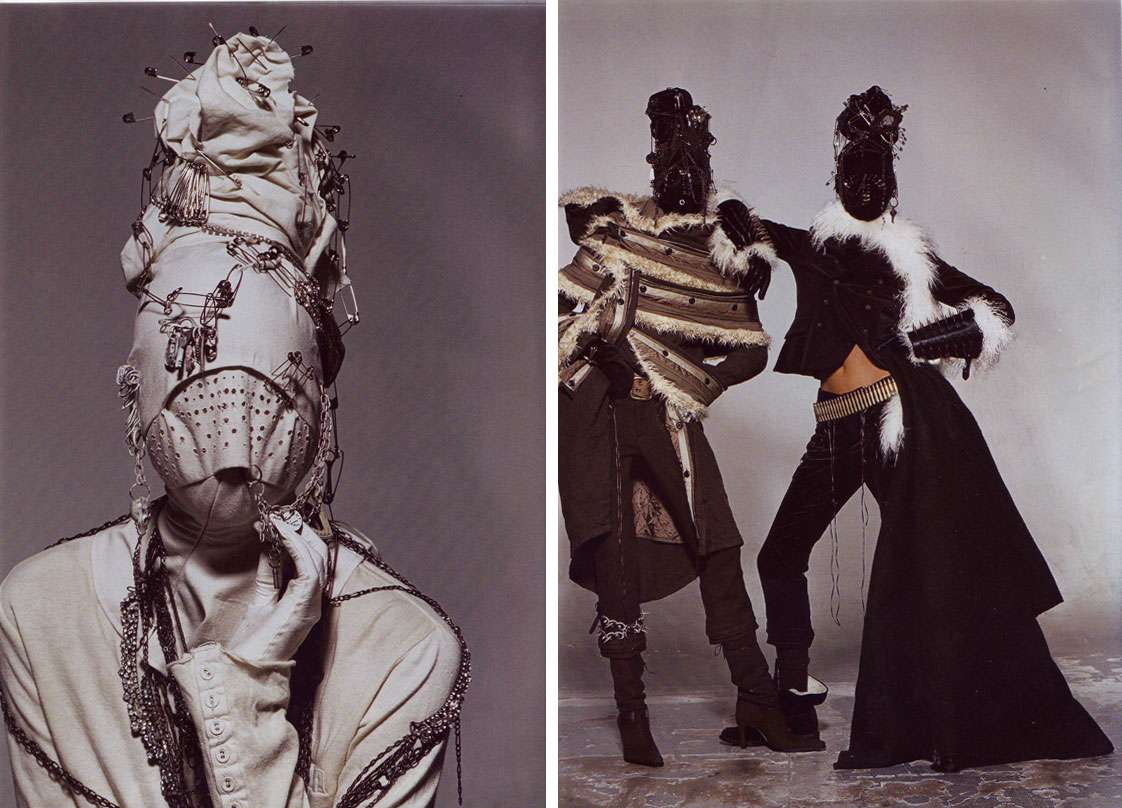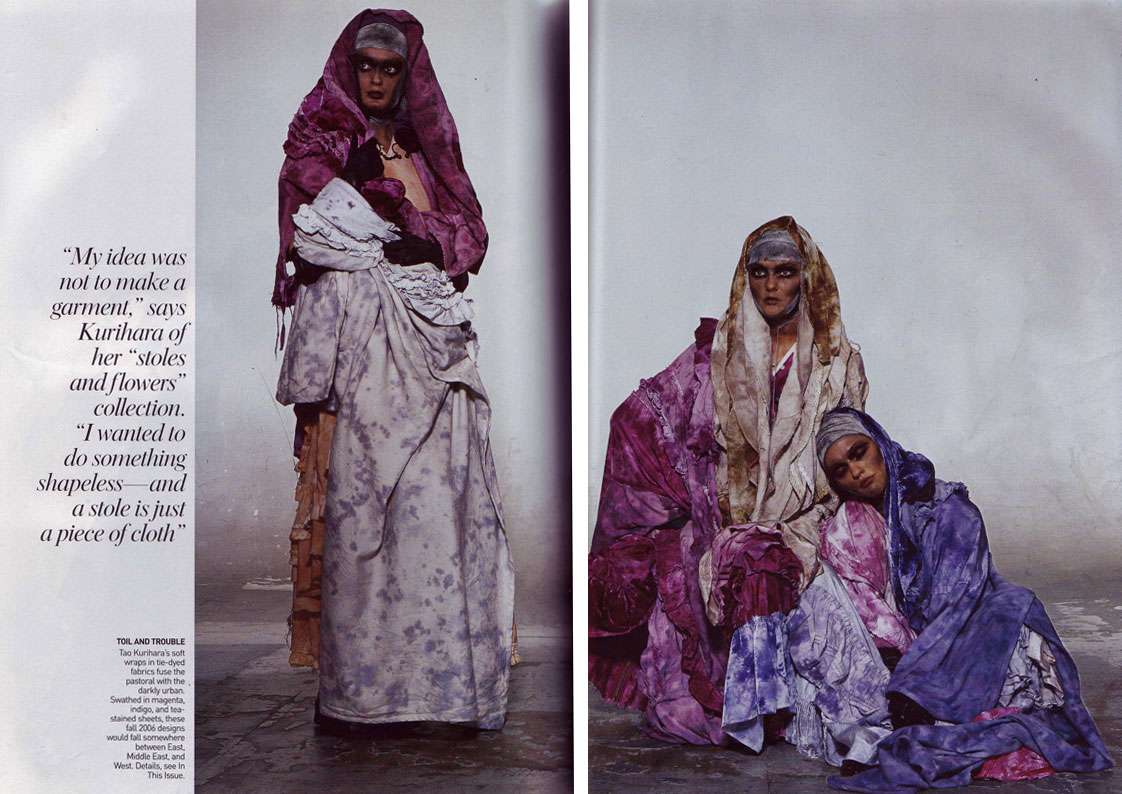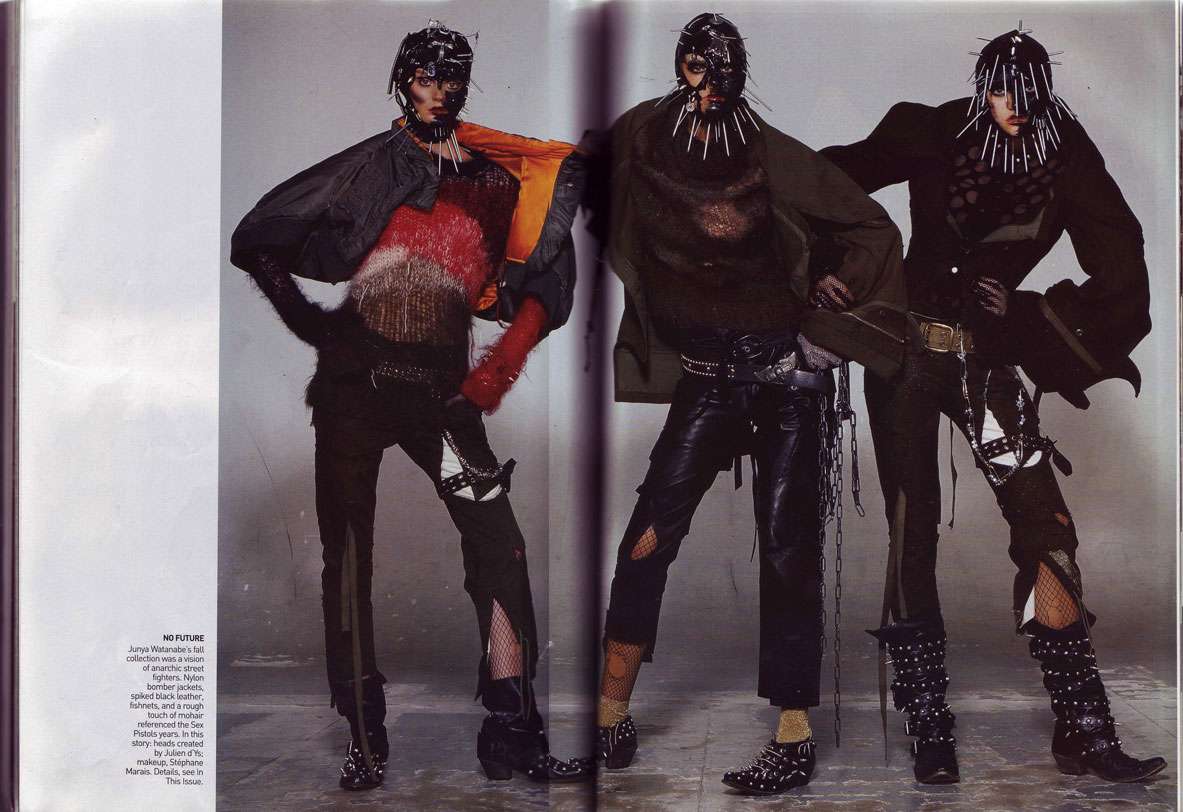Long before Barbie and Ken shacked up in a clumsy pink plastic hunk of a house complete with pink convertible corvette, shag carpeting and shaggier yet bean-bag chair, dollhouses existed outside the realm of childrens' playthings, captivating the imaginations (and bank accounts) of adults who took them very seriously and relished the meticulous creation of their extravagantly detailed lives in miniature.
Not only were they not created for children, but hell, they weren't even created for play, at least not in the sense of reaching inside and having Barbie make Skipper lunch at the kitchenette; they were purely succulent visual feasts. The game was making them as juicy as humanly possible, often requiring an army of craftspeople larger than the one most people use on their full-sized homes today, and the result was total decadence:
Above, In 1743, Sara Ploos van Amstel-Rothé, a Dutch merchant's wife, employed a different craftsman each for the ivory work, copper and brass, earthenware, and ironwork in her two dollhouses and
Below, then commissioned another artisan to build a cabinet to encase it.
Above, the cabinet that Sara Ploos van Amestel-Rothé had built to house her dollhouse, and Below, the entrance hall(complete with once functional clock), impressive "Collection Room" filled to the brim with fashionable blue and white porcelain, and bedroom, complete with furnishings specifically designed for a pregnant woman.

Above, sumptuous colors and fabrics punctuate a miniature by James Payne and Thomas Chippendale, c. 1740-45.
Below, Jeanne Overbeck built Overbeck Fantasy Castle in the 70s to "delight children" with a theme of "when Knighthood was in Flower." Interestingly, some of these rooms remind me of Tony Duquette's work.
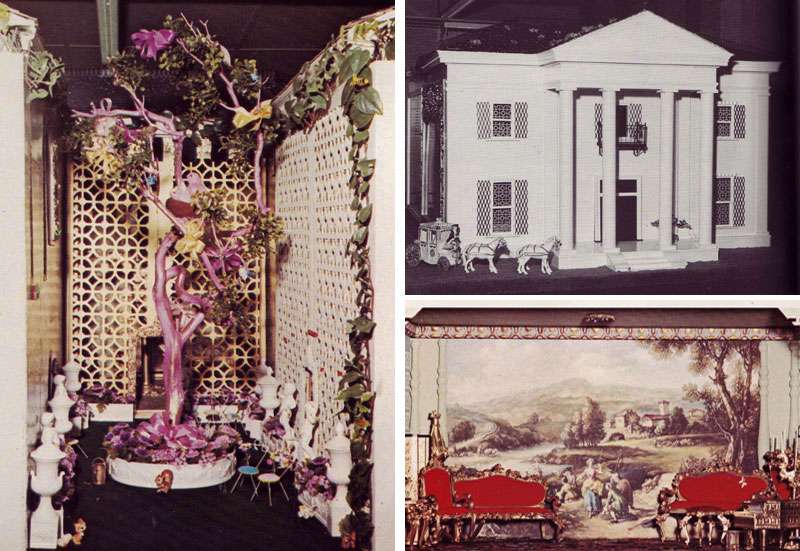
Images from: Connoisseur, December 1984, House & Garden, November 1985, and The Collector's Guide to Dollhouses and Dollhouse Miniatures, 1974.
